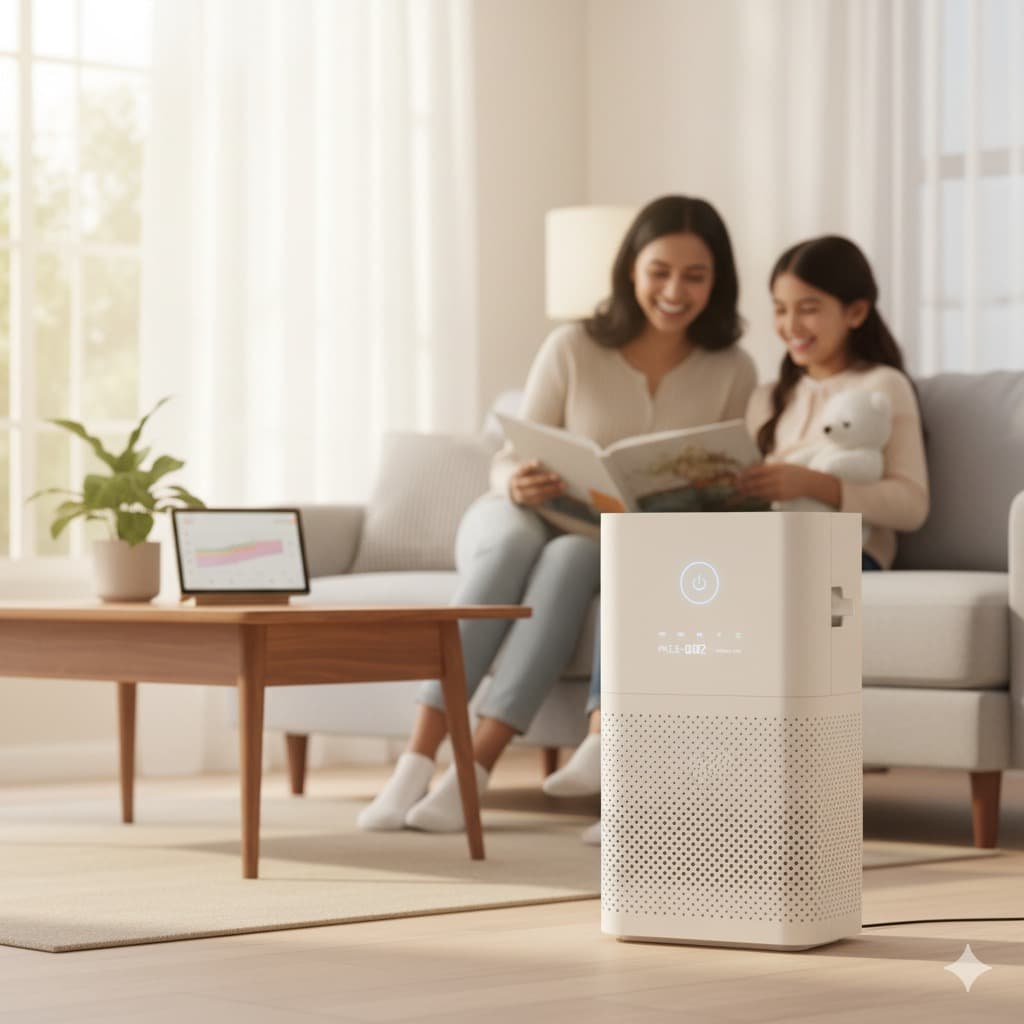
**How to Choose the Best Home Air Purifier: Critical Air Purifier Reviews & The Best Air Purifier List for 2025.**
Oct 4, 2025
As a world-renowned marketing expert and shopping guru, I've seen countless trends come and go, but one area that continues to grow in importance is indoor air quality. In October 2025, it's no longer a luxury but a fundamental component of a healthy, smart home. We're living in an era where environmental challenges and heightened health awareness demand proactive solutions for the air we breathe indoors. This comprehensive guide is designed to cut through the noise, offering you expert insights and the latest information to help you identify the best home air purifier for your unique needs. Whether you're battling seasonal allergies, managing pet dander, or simply striving for a cleaner living environment, this guide will arm you with the knowledge to make an informed decision, setting you on the path to improved health and well-being.
Why a Modern Air Purifier is Essential in 2025
The landscape of indoor air quality has dramatically shifted by 2025, making a sophisticated air purifier an indispensable appliance. Evolving environmental factors, such as increased urban pollution, persistent wildfire smoke, and a greater prevalence of airborne allergens, mean our homes are constantly assailed by microscopic invaders. Beyond external threats, our modern living spaces introduce new pollutants: volatile organic compounds (VOCs) off-gassing from furniture, cleaning products, and building materials, along with persistent odors from cooking and pets.
There's also a heightened global awareness of health and wellness. We understand more now about how the air we breathe directly impacts respiratory health, sleep quality, cognitive function, and even mood. A congested nose or persistent cough isn't just an annoyance; it can signal poor indoor air quality impacting your daily life. The contemporary best air purifier isn't just a filter; it's a critical component of a proactive health strategy, safeguarding your family against these unseen threats.
Furthermore, the integration of air quality management into smart home ecosystems is a hallmark of 2025 technology. Modern air purifiers leverage AI, real-time sensors, and seamless connectivity to provide continuous, optimized air cleaning. They can automatically adjust based on detected pollutants, integrate with your home's HVAC system, and even respond to voice commands. This advanced functionality transforms air purification from a passive device into an active, intelligent guardian of your indoor environment. Investing in a best air purifier today means embracing a healthier, smarter future for your home.
Key Factors for Choosing the Best Air Purifier
Selecting the ideal air purifier in 2025 requires a discerning eye, focusing on features that deliver tangible results and integrate seamlessly into your lifestyle. Here’s what truly matters:
-
CADR Ratings: The Performance Benchmark Clean Air Delivery Rate (CADR) is arguably the most crucial metric. It quantifies how quickly an air purifier removes specific pollutants from a room. Look for three numbers: dust, pollen, and smoke. A higher CADR means faster cleaning. For instance, a CADR of 250 for smoke means the purifier can reduce smoke particles at the same rate as adding 250 cubic feet of clean air per minute. Matching the CADR to your room size (ideally aiming for 5 air changes per hour, or ACH) is paramount to ensure the chosen model is truly the best home air purifier for your space.
-
Filter Technologies: Your Defensive Layers The heart of any air purifier lies in its filtration system:
- True HEPA Filter (High-Efficiency Particulate Air): Non-negotiable for allergy sufferers and pet owners. A True HEPA filter captures 99.97% of airborne particles as small as 0.3 microns, including dust mites, pollen, pet dander, mold spores, and even some bacteria and viruses. Anything less than "True HEPA" may not offer the same level of protection.
- Activated Carbon Filter: Essential for tackling odors and volatile organic compounds (VOCs) from cleaning supplies, paints, cooking, and off-gassing furniture. The thicker the carbon bed, the more effective it will be at adsorption. Without activated carbon, even the most powerful HEPA filter won't eliminate smells or chemical fumes.
- Pre-filters: These coarse filters capture larger particles like lint and pet hair, extending the lifespan of your more expensive HEPA and carbon filters. They are usually washable, making maintenance easier. A multi-stage filtration system combining these layers defines a truly effective and best air purifier.
-
Smart Features & Connectivity: The Intelligent Air Guardian In 2025, smart capabilities are standard, not a luxury.
- App Control: Manage settings, schedules, and monitor filter life from your smartphone.
- Real-time Air Quality Sensors: Continuously detect pollutants (PM2.5, VOCs) and display air quality index (AQI) readings, often with color-coded indicators.
- Auto Mode: Automatically adjusts fan speed based on sensor readings, ensuring optimal purification without constant manual intervention.
- Scheduling: Program specific on/off times or fan speeds to align with your daily routine.
- Smart Home Integration: Seamless connectivity with platforms like Matter, Google Home, Alexa, and Apple HomeKit for voice control and automation within your broader smart home ecosystem. These features elevate convenience and performance, making a device genuinely a best smart air purifier.
-
Room Size & Coverage Area: A Perfect Match An air purifier designed for a small bedroom will be ineffective in an open-plan living space. Always check the manufacturer’s recommended coverage area in square feet (or square meters) and compare it to your room size. As mentioned, aim for a CADR that achieves at least 4-5 air changes per hour (ACH) in your designated space for optimal cleaning.
-
Noise Levels (dB): Silent Operation is Golden Measured in decibels (dB), noise level is critical, especially for bedrooms or home offices. Below 30 dB is considered whisper-quiet, perfect for sleeping. Even on higher settings, a good air purifier should remain unobtrusive. Check reviews for real-world noise experiences, as marketing claims can sometimes be optimistic.
-
Energy Efficiency: Eco-Friendly & Cost-Effective Look for Energy Star certified models, indicating lower electricity consumption. An air purifier runs continuously, so energy efficiency directly impacts your utility bills. Consider annual operational costs beyond just the purchase price.
-
Maintenance & Filter Replacement: The Hidden Costs Filters are consumable and require periodic replacement. Research the cost and availability of replacement filters. Some filters last 6-12 months, while others may vary. Consider the total cost of ownership over several years, as cheap initial purchase prices can be offset by expensive, short-lived filters. Easy access for filter changes is also a plus.
-
Design & Aesthetics: Blending into Your Home Modern air purifiers are designed to be more than just functional appliances; they are aesthetic additions. Manufacturers now offer sleek, minimalist designs in various colors and finishes that blend seamlessly into contemporary home decor. Choosing a unit that looks good is a valid consideration for any best home air purifier.
Beyond Pure Purification: Achieving Optimal Indoor Comfort with Humidifiers
While air purifiers are essential for cleaning the air, a truly holistic approach to indoor air quality in 2025 often involves maintaining optimal humidity levels. Dry air, particularly in colder months or arid climates, can exacerbate respiratory issues, dry out skin and nasal passages, and even affect indoor plants and wooden furniture. Humidifiers work in tandem with air purifiers to create a comfortable, healthy indoor climate.
For those seeking a multi-functional solution, especially in smaller spaces like bedrooms or offices, an integrated unit can offer both purification and humidification.
 The Air Purifier and Humidifier Combo for Bedroom exemplifies this synergy. This 3-in-1 device purifies, humidifies, and diffuses essential oils, saving valuable counter space. Its H13 True HEPA filter effectively captures dust, pet dander, and other airborne particles in rooms up to 200 sq ft, while the 400ML water tank provides a steady release of cool mist. Designed for ultra-quiet operation, it's perfect for creating a healthier, more comfortable environment in baby rooms, pet areas, or bedrooms without disruption.
Price: $65.99
Shop Now for the Air Purifier and Humidifier Combo
The Air Purifier and Humidifier Combo for Bedroom exemplifies this synergy. This 3-in-1 device purifies, humidifies, and diffuses essential oils, saving valuable counter space. Its H13 True HEPA filter effectively captures dust, pet dander, and other airborne particles in rooms up to 200 sq ft, while the 400ML water tank provides a steady release of cool mist. Designed for ultra-quiet operation, it's perfect for creating a healthier, more comfortable environment in baby rooms, pet areas, or bedrooms without disruption.
Price: $65.99
Shop Now for the Air Purifier and Humidifier Combo
For larger spaces or those who prefer separate, specialized devices, modern humidifiers offer advanced features that complement your air purification strategy:
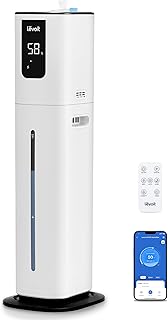 For homeowners with larger spaces and a penchant for smart home integration, the LEVOIT OasisMist 1000S (10L) Smart Humidifier is an excellent companion. Covering up to 600 sq ft and offering an incredible 100-hour runtime, it minimizes refills and maximizes comfort. Its Vesync App control allows for customized schedules, plant mode, aroma mode, and sleep mode, making it an incredibly versatile device for comprehensive indoor climate management.
Price: Check Product Page
Enhance Your Home with the LEVOIT OasisMist 1000S
For homeowners with larger spaces and a penchant for smart home integration, the LEVOIT OasisMist 1000S (10L) Smart Humidifier is an excellent companion. Covering up to 600 sq ft and offering an incredible 100-hour runtime, it minimizes refills and maximizes comfort. Its Vesync App control allows for customized schedules, plant mode, aroma mode, and sleep mode, making it an incredibly versatile device for comprehensive indoor climate management.
Price: Check Product Page
Enhance Your Home with the LEVOIT OasisMist 1000S
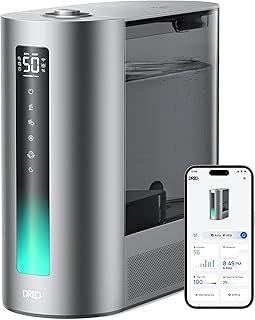 For ultimate flexibility and precise climate control, consider the Dreo 6L Smart Humidifier (HM713S). Offering both warm and cool mist options, it quickly brings relief to dry air, spreading humidity evenly across large rooms. With advanced sensors and a compensation algorithm, it provides twice the precision in humidity control, adjustable via its intuitive app or voice control (Alexa/Google Assistant). Its 3 modes, including a dedicated Sleep Mode, ensure tailored comfort around the clock.
Price: Check Product Page
Discover Smart Humidity with Dreo 6L Humidifier
For ultimate flexibility and precise climate control, consider the Dreo 6L Smart Humidifier (HM713S). Offering both warm and cool mist options, it quickly brings relief to dry air, spreading humidity evenly across large rooms. With advanced sensors and a compensation algorithm, it provides twice the precision in humidity control, adjustable via its intuitive app or voice control (Alexa/Google Assistant). Its 3 modes, including a dedicated Sleep Mode, ensure tailored comfort around the clock.
Price: Check Product Page
Discover Smart Humidity with Dreo 6L Humidifier
 Seeking quiet operation and smart control for a medium-sized room? The Dreo Smart Humidifier (4L Top Fill) is an ideal choice. With a supersized mist delivery that spreads ultrafine particles without wetting surfaces, it quickly alleviates dry air. Its smart features include precise humidity sensing, app and voice control (Alexa/Google Assistant), and a tranquil 28dB sleep mode, making it a perfect addition to bedrooms and nurseries.
Price: $44.99
Get the Quiet & Smart Dreo 4L Humidifier
Seeking quiet operation and smart control for a medium-sized room? The Dreo Smart Humidifier (4L Top Fill) is an ideal choice. With a supersized mist delivery that spreads ultrafine particles without wetting surfaces, it quickly alleviates dry air. Its smart features include precise humidity sensing, app and voice control (Alexa/Google Assistant), and a tranquil 28dB sleep mode, making it a perfect addition to bedrooms and nurseries.
Price: $44.99
Get the Quiet & Smart Dreo 4L Humidifier
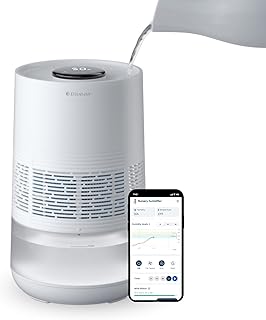 For a premium, mist-free humidification experience, the BLUEAIR Premium Smart Humidifier stands out. Utilizing 360° InvisibleMist evaporative technology, it delivers clean, balanced moisture without the common issues of white dust or residue. Its smart features, including AutoHydrate mode, app, and voice control, allow for a perfected sleep climate. The top-fill design and dishwasher-safe tank simplify maintenance, making it a sophisticated choice for comprehensive indoor air quality management.
Price: $149.99
Experience Premium Humidification with Blueair
For a premium, mist-free humidification experience, the BLUEAIR Premium Smart Humidifier stands out. Utilizing 360° InvisibleMist evaporative technology, it delivers clean, balanced moisture without the common issues of white dust or residue. Its smart features, including AutoHydrate mode, app, and voice control, allow for a perfected sleep climate. The top-fill design and dishwasher-safe tank simplify maintenance, making it a sophisticated choice for comprehensive indoor air quality management.
Price: $149.99
Experience Premium Humidification with Blueair
Integrating a high-quality humidifier alongside your air purifier ensures you address both air purity and optimal moisture content for a truly superior indoor environment.
Deep Dive into Air Purifier Technologies
Understanding the underlying technologies is crucial to discerning effective air purification systems and evaluating "air purifier reviews" critically.
-
Mechanical Filtration (HEPA, Activated Carbon): The Gold Standard This is the most widely adopted and proven technology. True HEPA filters physically trap airborne particles, while activated carbon filters chemically adsorb gases and odors.
- Pros: Highly effective for particles (HEPA) and VOCs/odors (carbon). Safe, produces no by-products like ozone. Reliable and consistent performance. The foundation of any best air purifier.
- Cons: Filters need regular replacement, incurring recurring costs. Can be less effective against very small viruses or certain chemical compounds without specialized carbon.
-
Electrostatic Precipitators: Ionizing for Capture These systems charge particles as they pass through, then collect them on oppositely charged plates.
- Pros: Can be very effective at capturing ultrafine particles. No filter replacement needed (plates are washable).
- Cons: Can sometimes produce trace amounts of ozone, a lung irritant. Plates require frequent cleaning, or efficiency drops. Less effective against odors and VOCs.
-
UV-C Light: Germicidal Action UV-C lamps are incorporated into some air purifiers to kill bacteria, viruses, and mold spores as air passes by the bulb.
- Pros: Effective against biological contaminants.
- Cons: Air must pass very close to the UV-C lamp for a sufficient duration to be effective. Standalone UV-C isn't an air purifier in itself; it needs to be combined with filtration. The bulb's effectiveness diminishes over time and needs replacement.
-
Ionizers/PlasmaWave: Particle Aggregation Ionizers release charged ions into the air, which attach to airborne particles, making them heavier and causing them to fall out of the air or stick to surfaces. PlasmaWave, a proprietary technology, creates positive and negative ions to break down pollutants at a molecular level.
- Pros: Can help remove very fine particles from the air.
- Cons: Similar to electrostatic precipitators, some ionizers can produce ozone as a by-product. Particles aren't truly "removed" from the room but often settle on surfaces, requiring manual cleaning. Always prioritize models that explicitly state "ozone-free" or have verifiable low ozone emissions.
-
Emerging Technologies (2025 & Beyond): The Horizon of Clean Air The future of air purification is exciting. By 2025, we're seeing:
- Advanced Photocatalytic Oxidation (PCO): Improved PCO systems that safely and efficiently neutralize a broader spectrum of VOCs and biological pollutants using UV light and a titanium dioxide catalyst, without harmful by-products.
- Sustainable Filter Materials: Research is progressing on biodegradable and recyclable filter media, reducing environmental impact and recurring costs.
- AI-driven Air Quality Prediction: Systems that learn your home's air quality patterns, weather, and local pollution data to proactively purify, optimizing energy use and performance. These innovations promise even more efficient and eco-friendly solutions for the best home air purifier.
Our Top "Best Air Purifier" Picks & Categories for 2025
When looking for the best air purifier in 2025, consider your primary need. Here's a breakdown of what features define the top performers in each category:
-
Overall Best Home Air Purifier: Look for models that offer an exceptional balance of high CADR ratings (especially for smoke and dust), a robust True HEPA and activated carbon filtration system, and a good suite of smart features (auto mode, air quality sensors, app control). It should be energy-efficient, operate quietly on lower settings, and have reasonably priced, long-lasting replacement filters. A premium design that blends into various decors is a bonus, signifying a truly universal best home air purifier.
-
Best for Allergies & Asthma: Prioritize models with exceptionally high CADR for pollen and dust, combined with a certified True HEPA filter that captures 99.97% of particles down to 0.3 microns. Crucially, look for a completely sealed system that prevents unfiltered air from leaking around the filters. Real-time air quality sensors that detect allergens (like PM2.5) and an effective auto mode are invaluable for proactive allergen management. Quiet operation is also key for undisturbed sleep.
-
Best for Pet Owners: The challenge here is two-fold: dander and odors. Seek out a unit with a powerful True HEPA filter to tackle pet dander, which is often very fine. Equally important is a substantial activated carbon filter specifically designed for pet odors, not just a thin layer. High CADR ratings for dust and smoke will also indicate effectiveness against airborne dander. Many air purifier reviews from pet owners emphasize the importance of robust carbon filtration.
-
Best for Smoke & VOCs: This category demands the most robust activated carbon filtration. Look for models with a thick, granular activated carbon bed (often several pounds) rather than a thin carbon mesh, as this is critical for adsorbing smoke, cooking odors, and harmful VOCs. A high CADR for smoke is also essential. Advanced PCO or other chemical-neutralizing technologies, if proven safe and effective, can further enhance performance in this area.
-
Best Budget-Friendly Option: The best budget air purifier doesn't mean sacrificing core functionality entirely. Focus on models that still offer a True HEPA filter and at least a basic activated carbon layer. Compromises might come in CADR (suitable for smaller rooms), smart features (manual controls instead of app), or design. Prioritize performance fundamentals and reasonable replacement filter costs over fancy extras.
-
Best Smart Air Purifier: For the tech-savvy, the best smart air purifier integrates seamlessly into your digital ecosystem. Look for comprehensive app control, precise real-time air quality monitoring (PM2.5, VOCs, humidity, temperature), and advanced auto modes that learn your patterns. Full compatibility with Matter, Google Home, Alexa, or HomeKit for voice control and complex automation routines is a must. Energy usage tracking and detailed air quality historical data are also hallmarks of a top-tier smart unit.
-
Best for Large Rooms/Open Spaces: High CADR is king here. Look for the highest possible CADR ratings across dust, pollen, and smoke, ensuring the unit can perform numerous air changes per hour (at least 4-5) in your expansive space. Often, these units will have larger filters and more powerful fans, which can sometimes mean a higher price point and potentially more noise on maximum settings. Check "air purifier reviews" specifically for large room performance.
-
Best Portable/Personal Air Purifier: These are compact units designed for small bedrooms, offices, or travel. They should feature a True HEPA filter and ideally some carbon filtration. While CADR will be lower, it should be appropriate for the smaller coverage area (e.g., 100-200 sq ft). Battery-powered options and USB-C charging are convenient. Quiet operation is paramount for personal spaces.
Interpreting "Air Purifier Reviews" & Buying Smart
Navigating the myriad of air purifier reviews online can be daunting. As your shopping guru, I advise a critical approach. Look for consistency across multiple reputable sources, not just one glowing testimonial. Pay attention to how users describe real-world performance: Does it effectively clear smoke? Is it quiet enough for a bedroom? Do the smart features actually work reliably?
Understand technical jargon in a practical context. For example, a high CADR means faster air cleaning, but how does that translate to your room size and desired air changes per hour? Some "air purifier reviews" might highlight specific features; determine if those features are genuinely relevant to your needs or just marketing hype. Be wary of reviews that seem overly generic or don't provide specific use cases. Always check if the review mentions recurring filter costs and availability, a detail often overlooked but critical to long-term satisfaction. Ultimately, genuine user experiences, corroborated by expert analysis, are your most reliable guide to finding the best home air purifier.
Maintenance Guide for Optimal Performance
Even the best home air purifier requires proper care to maintain its peak performance and longevity. Regular maintenance ensures you continue to breathe the cleanest possible air.
- Filter Replacement: This is the most crucial step. Most True HEPA filters need replacement every 6-12 months, and activated carbon filters often have a similar lifespan, though some can be shorter depending on air quality. Always use genuine manufacturer-recommended filters for optimal performance and to avoid voiding warranties. Ignoring filter replacement can lead to reduced efficiency, increased energy consumption, and even re-release of trapped pollutants. For complementary humidifiers, replacing components like the AprilAire 80 Replacement Canister annually is vital for proper function and healthy moisture delivery.
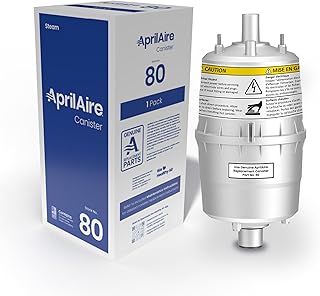 The AprilAire 80 Replacement Canister is designed for specific AprilAire Steam Humidifier Models (800, 801, 865, 866). Genuine replacement ensures optimal performance and a leak-proof seal. Replacing this canister annually helps maintain optimal indoor humidity (40-60%), reducing respiratory infections and allergy symptoms, and preserving household items. It's even compatible with the AprilAire Healthy Air App for replacement reminders.
Price: $99.99
Ensure Peak Performance with AprilAire 80 Canister
The AprilAire 80 Replacement Canister is designed for specific AprilAire Steam Humidifier Models (800, 801, 865, 866). Genuine replacement ensures optimal performance and a leak-proof seal. Replacing this canister annually helps maintain optimal indoor humidity (40-60%), reducing respiratory infections and allergy symptoms, and preserving household items. It's even compatible with the AprilAire Healthy Air App for replacement reminders.
Price: $99.99
Ensure Peak Performance with AprilAire 80 Canister - Pre-filter Cleaning: If your unit has a washable pre-filter, clean it monthly. This prevents larger debris from clogging the more delicate HEPA filter, extending its life and maintaining airflow.
- Exterior Cleaning: Gently wipe down the exterior surfaces and air intake/outtake grilles with a soft, damp cloth to prevent dust buildup from impeding airflow.
- Sensor Cleaning: If your purifier has air quality sensors, periodically clean them (following manufacturer instructions) to ensure accurate readings. Dust accumulation can impair their precision.
Myths vs. Facts in Air Purification (October 2025 Edition)
In the evolving world of air purification, distinguishing fact from fiction is vital for making smart choices in 2025.
-
Myth: "All air purifiers produce harmful ozone." Fact: While some older technologies (like certain ionizers or electrostatic precipitators) could produce ozone, modern best air purifier models, especially those relying on True HEPA and activated carbon, are certified as ozone-free by organizations like CARB (California Air Resources Board). Always check for such certifications.
-
Myth: "Permanent filters mean no recurring costs." Fact: "Permanent" filters, often found in electrostatic precipitators, typically require frequent washing. If not cleaned meticulously, their efficiency drops drastically. While you avoid buying new filters, you invest time and water in maintenance. True HEPA filters, though replaceable, offer consistent performance.
-
Myth: "Air purifiers are energy hogs." Fact: Many contemporary air purifiers are Energy Star certified, meaning they are very energy efficient. When operated on auto mode or lower fan speeds, they consume minimal power, comparable to a light bulb. Smart features often optimize energy use, ensuring your best home air purifier doesn't break the bank on electricity.
The Future of Home Air Purification (Beyond 2025)
As we gaze beyond 2025, the future of home air purification promises even more sophistication and personalization. We anticipate hyper-local air quality mapping, where integrated home systems will leverage external air quality data, internal sensors, and even personal wearable data to create highly granular, room-by-room air quality profiles. AI-integrated preventative purification will become standard, with systems predicting potential pollution spikes (e.g., before cooking, during high pollen counts) and proactively adjusting purification settings. We may see personalized health integration, where air purifiers adapt their operation based on a user's health metrics (e.g., adjusting humidity or filtration levels if an allergy sufferer's symptoms worsen). Furthermore, advancements in molecular-level pollutant breakdown will tackle even the most elusive chemical threats, making our homes truly pristine sanctuaries. The journey to perfect indoor air is continuous, and the innovations keep coming.
Frequently Asked Questions (FAQ)
-
Q: How many air purifiers do I need for my home? A: Ideally, one for each room where you spend significant time, especially bedrooms and living areas. For open-concept spaces, a single high-CADR unit may suffice.
-
Q: Can an air purifier help with cooking smells? A: Yes, if it has a robust activated carbon filter. The carbon layer adsorbs odors, making it effective against cooking smells.
-
Q: What's the difference between an air purifier and a humidifier? A: An air purifier cleans the air by removing pollutants, while a humidifier adds moisture to the air. Some units, like the combo featured, do both.
-
Q: How often should I run my air purifier? A: For optimal air quality, it's best to run your air purifier continuously, especially in auto mode, to maintain consistent air purity.
-
Q: Do air purifiers help with viruses and bacteria? A: True HEPA filters can capture airborne particles containing viruses and bacteria. UV-C light, when included, can kill them, but this requires the pathogens to pass directly through the UV-C field.
Conclusion
In October 2025, investing in the best home air purifier is an investment in your health, comfort, and peace of mind. As a shopping guru, I urge you to look beyond basic claims and focus on the key factors discussed: CADR, advanced filtration, smart features, and appropriate room sizing. By understanding the technologies, interpreting "air purifier reviews" intelligently, and committing to proper maintenance, you can transform your indoor environment. Don't compromise on the air you breathe; make an informed decision today to secure a healthier tomorrow for you and your loved ones.
You Might Also Like
- What's the Best Air Purifier for Allergies? Breathe Easier Now!
- Optimize Air: Why You Need a Smart Cool Mist Humidifier
- Smart & Serene: Choosing the Best Humidifier for Your Bedroom's Optimal Air Quality
Discover more expert shopping guides and product recommendations on our site.